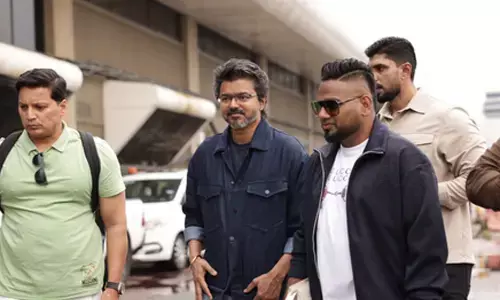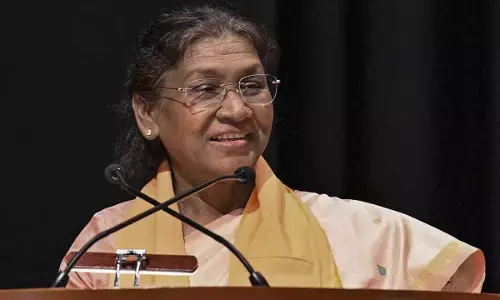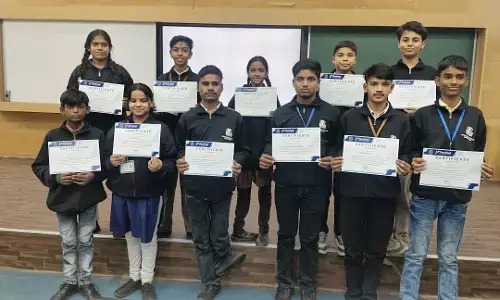Kinaesthetic learning - a holistic approach

LSRW- which we all know as Listen, Speak, Read and Write-in that order only; is one of the ways in which a language is taught (or learnt). Seetha Anand Vaidyam, remedial therapist, freelance kindergarten teacher, trainer
LSRW- which we all know as Listen, Speak, Read and Write-in that order only; is one of the ways in which a language is taught (or learnt). Seetha Anand Vaidyam, remedial therapist, freelance kindergarten teacher, trainer, writer and parent counsellor at Ananda Foundation chose to rearrange the LSRW pattern to LSWR and came up with amazing results. Seetha, an avid Waldorf follower, says holistic & healthy learning and living must begin in early years. Hence she carefully wove good (organic) food and crafts into her customised curriculum. She’s been doing this for the past two decades and realised experimentally (and experientially) that food also plays a major role in learning. With her, education metamorphoses to give better outcomes. Seetha’s contribution would tempt any educationist to experiment…

Listen, speak, write and read, why this rearrangement?
This is not my finding but what Waldorf system follows. Children start with making sounds, later they associate certain meanings to sounds and then gradually pick up words by listening to speech around them, thus eventually learn a language. We all know when early man first wanted to communicate; he did so through drawings and then gradually developed letters and a language. So, it was writing that preceded reading. A child's urge to communicate should be satiated by giving him/her an opportunity to write (read draw/scribble).You will find many kids scribble something and say for e.g., "butterfly is flying" or "this is a flower" -- these are examples of their urge to express themselves even before they are neurologically ready to have clear visual perception that can be translated onto a paper. When you start from their comfort level learning becomes natural and not burdensome for children. We see more and more children having difficulties in writing perhaps because they are made to write or read a copy already written matter and not what they wish to express on their own.
Is hand work or hands on synonymous to heads-on?
Children below seven do not have the required fine motor skills for writing with a pencil (especially the kind of thin pencils that are generally used in schools). These skills need to be developed through gross motor movements followed by hand work, hence I use a lot of crafts activities. I encourage them to help in kitchen and garden too, which helps children develop the requisite dexterity required for writing. Therefore the focus of early childhood education should be to develop motor skills and not right away begin with writing or reading.
Again the increase in the incidence of difficulties in reading and writing could be largely due to the pre-emptive introduction of the same. Crossing of mid lines, eye tracking and finger dexterity are required for reading and writing. Only age appropriate handwork can prepare the child for this.
Reading requires the eyes to move from left to right and move row by row in quick succession. For this eye tracking, crossing of mid lines is crucial. In my experience as a therapist, I have seen children make a huge improvement in reading ability after remedial work on eye tracking and mid line integration. Even correction of vestibular issues and working on balance improves reading and writing ability. Therefore the foundations for learning which is building a strong, functioning physical body should precede academic teaching. This has been the lesson that I have learnt. Yoga, chanting of shlokas, traditional handwork -- are all sagacious practices. A healthy diet that builds a strong physical body including muscles and bones is also a crucial part of early childhood. Chemical free food that helps build and retain the immune system is essential for the body and brain to function optimally.
How long you've been into teaching?
I have been in the field of education for the past 12 years. I started off as a kindergarten teacher and later been a remedial therapist and a teacher trainer. I have conducted over 100 workshops for teachers across India, Nepal and Dubai. I conduct workshops on holistic early childhood curriculum that has been inspired by Waldorf curriculum and Steiner's Anthroposophy.
When did you move into early education fulltime?
I first began my career in HR trying to do soft skills training. Very soon I realised that basic virtues have to be taught very early in life and not to adults. That made me shift my career to early childhood.
As an educationist what’s the lesson you’ve learnt?
To think and act holistically. We are a whole being and so solutions to our problems need to be holistic. Education will be lopsided if it is not holistic. It cannot only focus on academics. Apart from intellectual learning; emotional intelligence or educating the heart is a responsibility of schools/parents. Likewise educating the hands to work is where we need to begin. This is not just about developing motor skills but something which has many layers to it. Gandhiji's insistence on each Indian spinning at least for a short while each day/ self reliance/ doing one's own work has so much inner meaning. In today's mechanised world it is very imperative to not lose "touch" with our handwork.
















